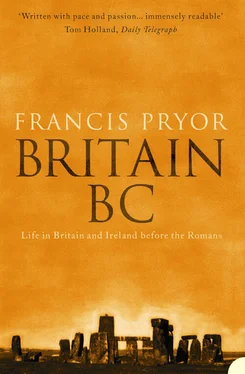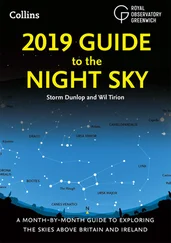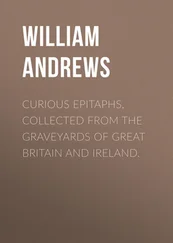From the very outset of the great survey, John Wymer decided on a landscape-based approach. He wanted to see how sites and so-called ‘stray’ finds (hand-axes and other flint implements that were found on their own, without any other archaeological context) could be related to their ancient surroundings. River valleys were a crucially important component of the ancient landscape – as they are of the present-day one – and they provided a natural framework for the survey. We tend to think of the inhabitants of the Old Stone Age as ‘cave-men’, but in reality, although caves were indeed used, they don’t occur naturally in lowland river valleys, so it is likely that most people constructed shelters in the open air, probably using wood, bone and hides. Convincing archaeological evidence for such shelters has so far eluded us, but this is hardly to be wondered at: ancient equivalents of the New Agers’ bender – temporary houses made from hoops of steel pipe or green wood covered with plastic – would leave very few clues to their existence after several hundred thousand years. The uprights used to build such structures would not need to be sunk into the ground, so they would leave no trace of that commonest of all archaeological features, the post-hole. By the same token, there would be no wall foundation trenches. These shelters would not have been occupied over an extended period, as the community, which relied entirely on hunting and gathering their food, would move around the countryside, probably following well-trodden routes.
The earliest period of human settlement in what were later to become the British Isles predates the most extensive glaciation of Britain, known as the Anglian glaciation, which began around 480,000 years ago. Anglian ice covered all of Britain north of a line drawn from south Essex and the Thames estuary, due west across the country to Bristol; thereafter it hugged the southern shore of the Bristol Channel, but never truly penetrated inland into Somerset, Devon or Cornwall.
Happisburgh (pronounced ‘Hazeborough’) is about seventy kilometres east of Holme-next-the-Sea, where the so-called ‘Seahenge’ timber circle was found in 1998. Like Holme, Happisburgh is a very exposed beach, and subject to serious erosion. It has an outcrop of the so-called Cromer Forest Bed, a Pleistocene deposit which was laid down well before the Anglian glaciation. Recently, Palaeolithic flints, including a hand-axe, were found on the beach, and they appeared to be very closely associated with the Cromer Forest Bed. This would place them about 150,000 years earlier than the earliest flints yet found in Britain – i.e. around 650,000 years ago. The site is under such grave threat of destruction by erosion that any passing archaeologist should make a visit, recover anything he sees, and carefully record its position. It’s not far from where I live, and it will make an excellent spot for weekend winter expeditions – there’s something magical about finding ‘the earliest’ of anything that appeals to me enormously.
Whatever is, or is not, found at Happisburgh, there are only a handful of sites belonging to this very remote period of prehistory. There are also ‘stray’ finds of hand-axes and pebble chopping-tools along many of the river valleys of southern Britain, but these cannot always be dated with accuracy.
At this point some readers may query the presence of pebble chopping-tools in Britain, a mere half-million years ago, of a type that supposedly ceased to be made in Africa about a million years ago. Does the existence of these tools indicate that Britain was occupied over a million years ago? I don’t think it does. It’s inconceivable that large areas of a region so far into northern Europe could have been occupied at so early a date, and there’s no other independent evidence to support such an idea. Many pebble choppers are unearthed as ‘stray’ finds in river gravels, especially in Essex, which is why this British tradition of pebble tools was named the Clactonian.
Most specialists in this field are today agreed that the Clactonian is not a ‘tradition’ in its own right; in other words, these tools (if that’s indeed what they were) were not produced by a separate group of people with their own distinctive culture and identity. Most probably the choppers were made because the gravels routinely produce nice fist-sized, rounded pebbles which were too small to be made into hand-axes, but whose shape simply demanded that they be fashioned into a tool. Some fist-sized and -shaped flints can have that effect when one’s brain is in flint-knapping mode. Put another way, Clactonian choppers are examples of local adaptation and inventiveness. It’s easy to forget that people in the past weren’t aware that their toolmaking activities would later be examined in minute detail by archaeologists. So occasionally they depart from what we expect them to do. Personally, I find this explanation for British pebble tools pretty satisfying, but still a tiny doubt niggles away at the back of my brain: Clactonian-like tools do occur occasionally on later sites of the Palaeolithic, which tends to support the ‘local adaptation and inventiveness’ theory; but having said that, in general they are very early. Even if it is only a half-mystery, it’s an intriguing one, and I wonder when, or if, it will be resolved.
It’s time now to turn our attention to the south coast of England, and the site at Boxgrove, West Sussex, which is undoubtedly the most important Palaeolithic discovery ever made in Britain. It’s hard to exaggerate its significance. When one talks to Palaeolithic archaeologists their eyes light up at the mention of the quarry at Eartham, and their enthusiasm becomes infectious.
Although I only managed to go to the site once, it was almost like a religious experience. To reach the quarry one has to walk down a long, gradually sloping road. Beside me was the then Chairman of English Heritage, Jocelyn Stevens (now Sir Jocelyn), who was visiting Boxgrove to see how his organisation’s money was being spent. I was there as a member of the committee which provides English Heritage with independent advice on all sorts of archaeological matters.
Sir Jocelyn is a very snappy dresser: trousers with knife-edge creases, shoes that glisten in the sun, double-breasted coats with a rose at the lapel. He is also a rapid walker, and likes to get to the point in all manner of ways. He was very keen to see the site, which had often featured on the national news. I was keen too, but I was also in the throes of a nasty cold, and was not feeling 100 per cent up to scratch, which is why I found myself stumbling over the small cobbles in my efforts to keep pace with the great man. My shambling gait did little to improve the impression given by my less than immaculate tailoring, which owed rather more to Skid than to Savile Row. We made a strange pair. Around us were the other members of the committee, and various archaeologists and administrators from English Heritage head office in London. It was a fabulous summer morning, crisp and fine, with larks on the wing in the clear coastal air. I was almost feeling better.
I wasn’t aware of it as we walked, but the hill leading into the quarry was actually a smoothed-out ancient cliff, and it was this cliff which provided the key to the dating of the finds at Boxgrove. Most archaeological discoveries are associated with a single person. True, he or she almost invariably works with and leads a closely knit team, but it usually requires one person to provide the fire and enthusiasm which fuels the project. At Boxgrove that person was, and is, Mark Roberts.
As I’ve noted, Boxgrove frequently featured in the news, but unlike some other famous sites, it has also been comprehensively written-up. The learned, heavy-duty report was published by English Heritage in 1999. 13 It’s a superb piece of work, but it’s fairly heavy-going and technical, aimed at postgraduate students and professional archaeologists rather than the general reader. A far more accessible account of the project, written by Mike Pitts and Mark Roberts, appeared in 1997. 14 This is a landmark of a book that’s hard to put down, combining a good, racy narrative with accurate scholarship.
Читать дальше












